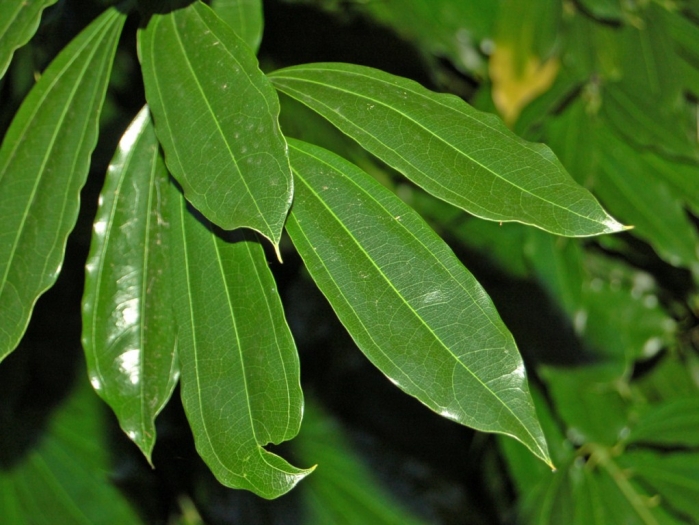Laurel-Leaved Snail Tree
(Cocculus laurifolius)
Laurel-Leaved Snail Tree (Cocculus laurifolius)
/
/

Hectonichus
CC BY-SA 3.0
Image By:
Hectonichus
Recorded By:
Copyright:
CC BY-SA 3.0
Copyright Notice:
Photo by: Hectonichus | License Type: CC BY-SA 3.0 | License URL: https://creativecommons.org/licenses/by-sa/3.0 | Uploader: Hectonichus | Publisher: Wikimedia Commons | Title: Menispermaceae_-_Cocculus_laurifolius.JPG | Notes: == Description == {{Information| |Description = {{en| Colchicum autumnale.}}{{la| Colchicum autumnale.}}{{pl| Zimowit jesienny.}} |Source = own work |Date = 2007-09-09 |Author = [[User:Lestath|Lestat]] (Jan Mehlich) |Permission = Lest Mehlich) put
































Estimated Native Range
Summary
Cocculus laurifolius, commonly known as Laurel-leaved Snail Tree, is an evergreen shrub or small tree native to the understory of humid, montane forests in Southeast Asia, including regions of the Himalayas, and extending to Japan. It typically grows to a height of 25 feet with an equal spread, forming a round-headed shape with a medium to fast growth rate and a coarse texture. The leaves are a glossy medium green, and the plant exhibits a dioecious reproductive system, meaning male and female flowers are found on separate plants. The flowers are small, yellowish, and inconspicuous, appearing in spikes at the leaf axils. The fruit is a small (6 mm) black drupe that may attract birds.
The Laurel-leaved Snail Tree is valued for its lush foliage and adaptability to a range of sun and soil conditions within its temperature tolerance. It is often used as a hedge or screen in formal garden settings, benefiting from frequent shearing to maintain its shape. It thrives in full sun to full shade and prefers medium water and well-drained soils. While it is not known for showy flowers, its dense foliage and evergreen nature make it a reliable choice for year-round interest.CC BY-SA 4.0
The Laurel-leaved Snail Tree is valued for its lush foliage and adaptability to a range of sun and soil conditions within its temperature tolerance. It is often used as a hedge or screen in formal garden settings, benefiting from frequent shearing to maintain its shape. It thrives in full sun to full shade and prefers medium water and well-drained soils. While it is not known for showy flowers, its dense foliage and evergreen nature make it a reliable choice for year-round interest.CC BY-SA 4.0
Plant Description
- Plant Type: Shrub, Tree
- Height: 15-25 feet
- Width: 10-15 feet
- Growth Rate: Rapid, Moderate
- Flower Color: N/A
- Flowering Season: Spring, Summer
- Leaf Retention: Evergreen
Growth Requirements
- Sun: Full Sun, Part Shade, Full Shade
- Water: Medium
- Drainage: Medium
Common Uses
Bird Garden, Hedges, Low Maintenance
Natural Habitat
Humid, montane forests in Southeast Asia and Japan
Other Names
Common Names: Laurel-Leaf Snailseed , 樟葉木防己
Scientific Names: Cocculus laurifolius , Menispermum laurifolium , Cinnamomum esquirolii , Cebatha laurifolia , Cocculus angustifolius , Cocculus bariensis , Galloa trinervis , Holopeira australis , Holopeira fusiformis , Holopeira laurifolia , Nephroica laurifolia
GBIF Accepted Name: Cocculus laurifolius DC.